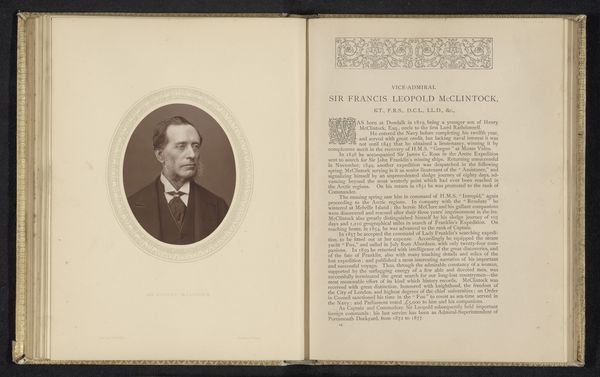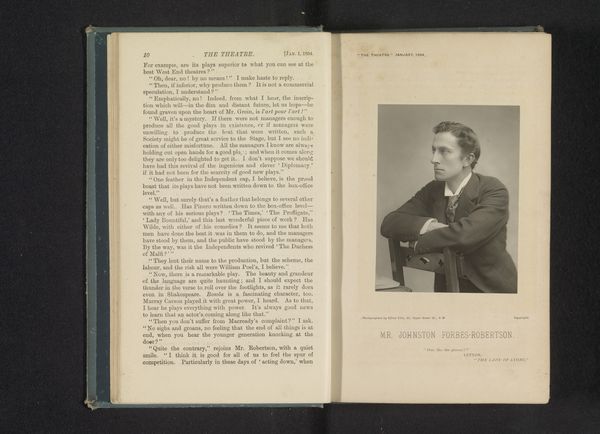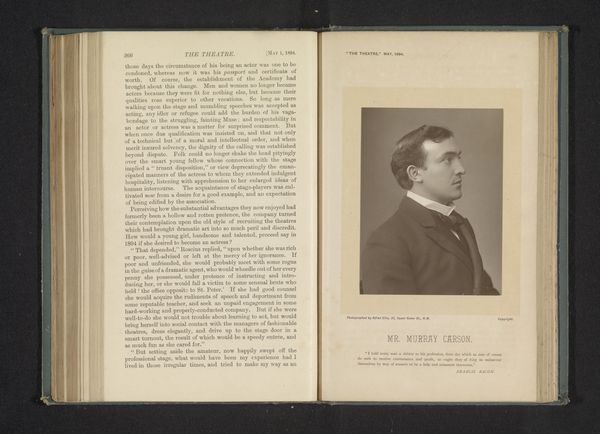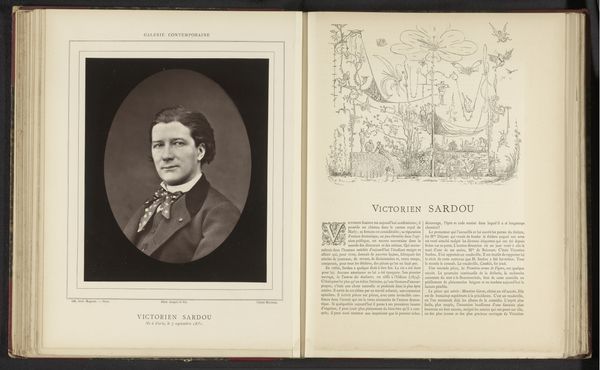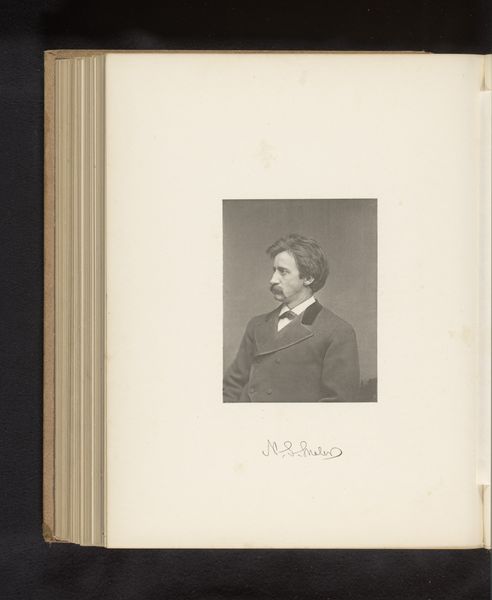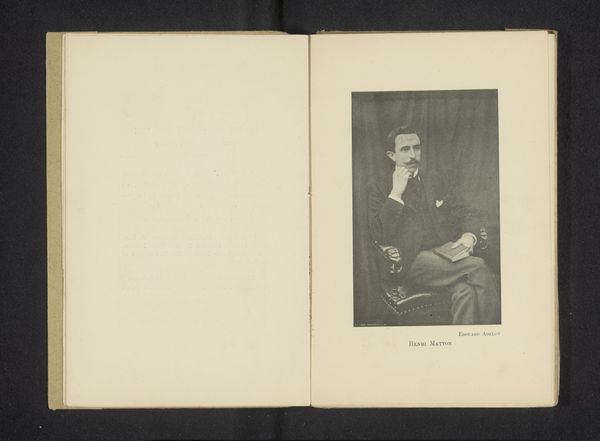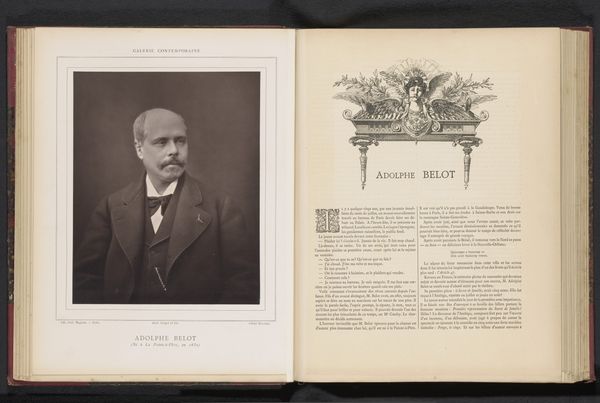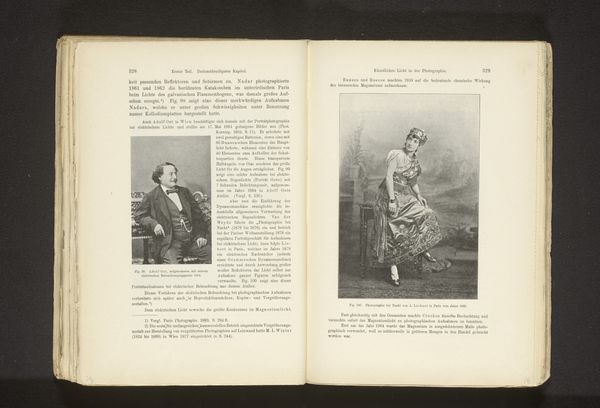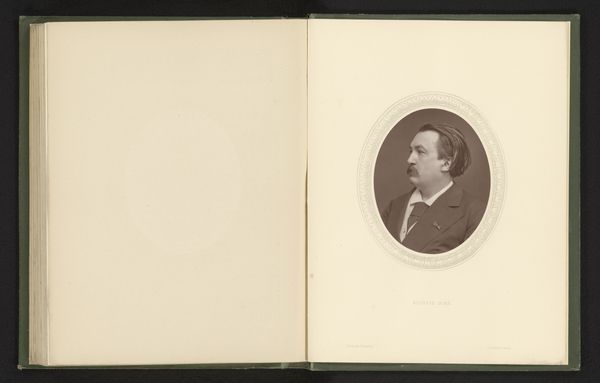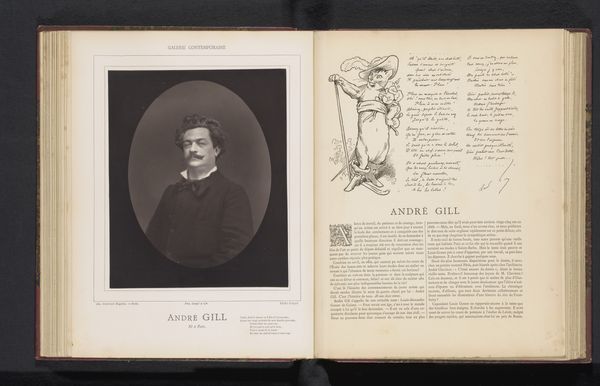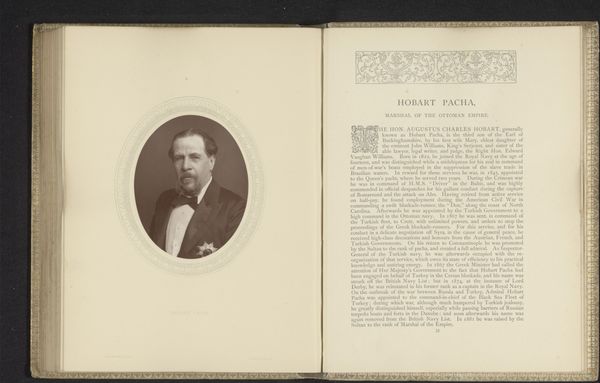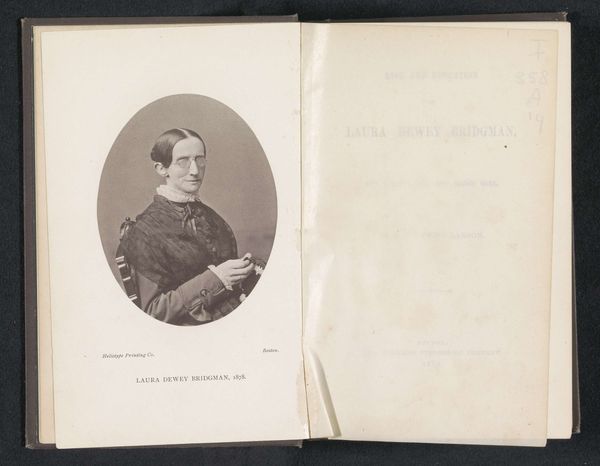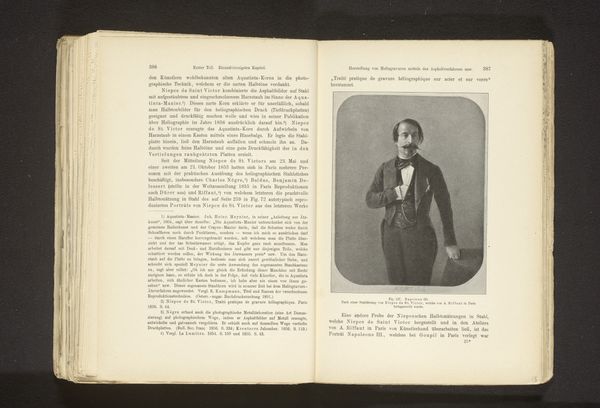
photography, albumen-print
#
portrait
#
photography
#
albumen-print
#
realism
Dimensions: height 228 mm, width 185 mm
Copyright: Rijks Museum: Open Domain
Editor: Here we have an albumen print, a photographic portrait of Paul de Cassagnac, attributed to Charles Louis Klary. It was taken sometime before 1879. What strikes me is the performative nature of the portrait - the pose, the attire... How do you interpret this image within the context of its time? Curator: It's essential to consider the rise of photography during this period. It democratized portraiture, making it accessible beyond the elite. However, these photographs were often carefully staged, reinforcing social hierarchies and desired public images. How do you think Cassagnac intended to be seen? Editor: Perhaps as a figure of authority, hence the suit and the rather firm gaze. Do you think the very act of creating this portrait was a political statement, especially if Cassagnac held some kind of political role or ambitions? Curator: Absolutely. The "Galerie Contemporaine", which is printed on the opposite page, was instrumental in circulating particular images of power and influence. The selection of individuals featured was undoubtedly a political act itself, determining whose visages were deemed worthy of memorialization and replication. Think of this in contrast to say... Delacroix's portrait of Chopin. It has this 'man of the people' look - is there a way Cassagnac wants us to think about him and who he reps by his formal attire and setting? Editor: That is a great connection to Chopin! I hadn’t thought of portraiture as having so much "say" through its deliberate composition and construction. Curator: It speaks to the public role of art – or here, photography – in shaping historical narratives and power dynamics. Editor: This conversation helped me appreciate how photographs, seemingly objective, were strategically employed in constructing specific public personas and perpetuating the political goals of institutions like the “Galerie Contemporaine.” Curator: Exactly, understanding this challenges us to look beyond the surface of images and question the motivations behind their creation and dissemination.
Comments
No comments
Be the first to comment and join the conversation on the ultimate creative platform.
